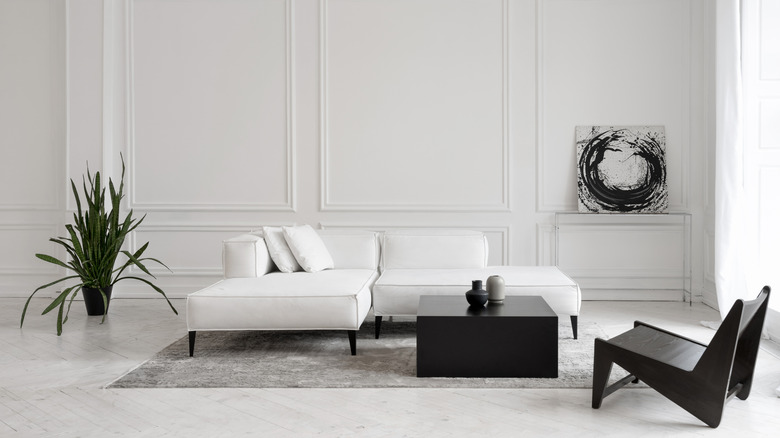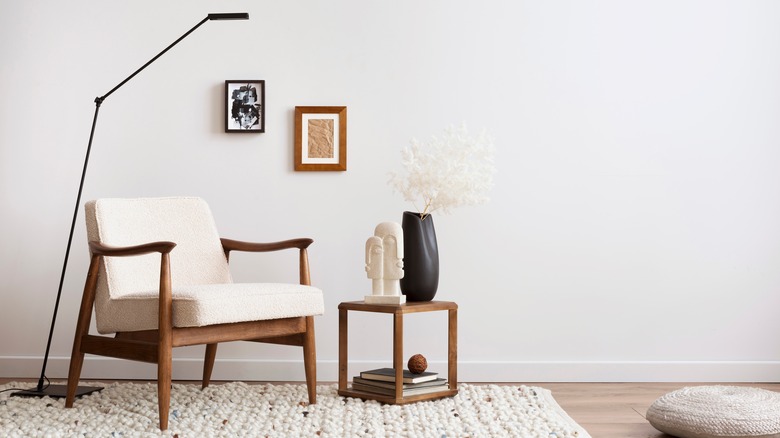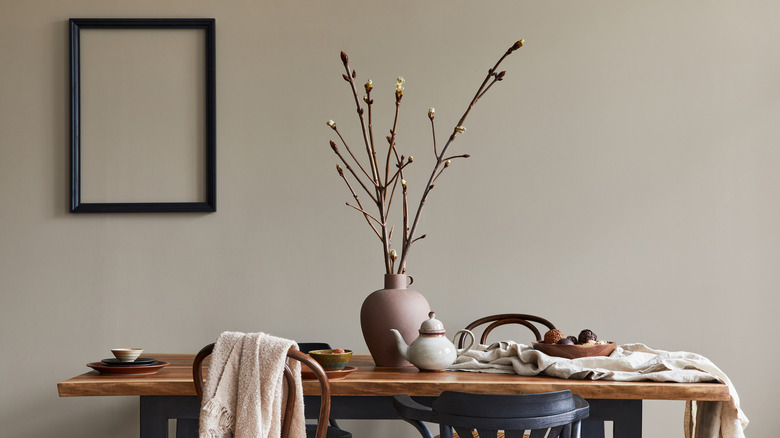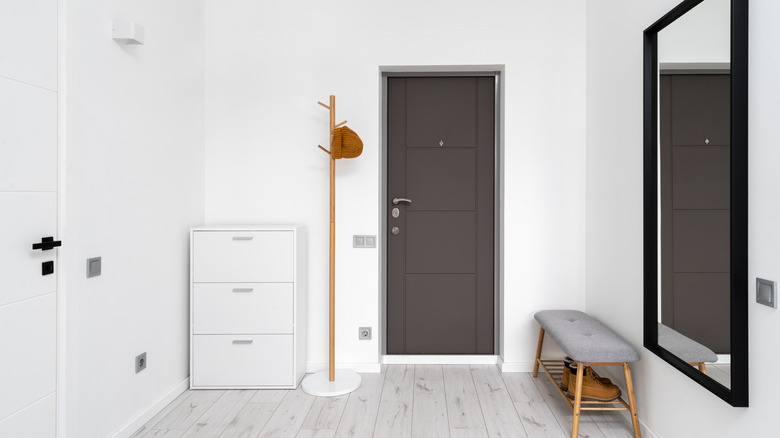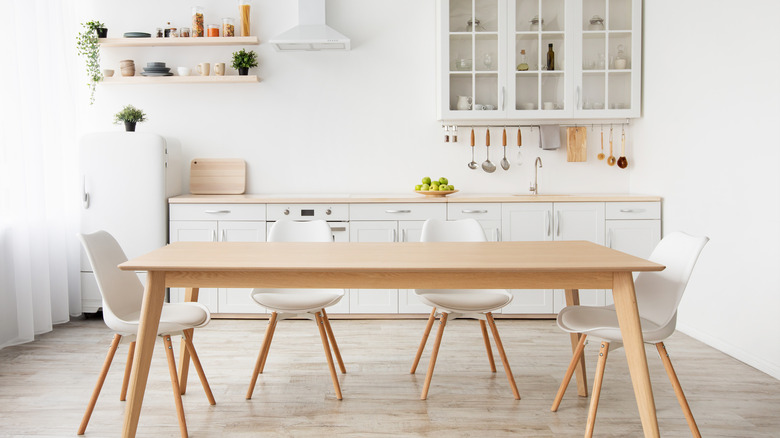Why Minimalism Will Never Go Out Of Style, According To A Design Expert
The concept of minimalist décor conjures images of sleek white rooms with streamlined furniture and little décor. While this may be the most popular image, it's not exactly what minimalism means in the world of interior design. That's because minimalism is a lifestyle as much as it is an aesthetic. It does refer to furniture and design with little ornamentation, but it also means having fewer things in general; this is not the design style of collectors or someone who likes tchotchkes. "There are a few ways to achieve a minimalist look, which is typically characterized by clean lines, open spaces, and the use of natural materials with muted colors," says Kelly Simpson, Senior Director of Design and Innovation at Budget Blinds.
As of late, some have said that minimalism is on its way out. Aesthetic opinions have gotten more specific, and design schemes are often more colorful, eclectic, and full of unique décor. Though bolder and brighter interiors might be on the rise, it's unlikely that minimalism will completely disappear. In an exclusive interview with House Digest, Simpson further explains some of the most important aspects of minimalism that make it a timeless interior design option that will always be around.
Minimalism encourages a decluttered space
Minimalism is clean by nature; these types of spaces don't have a ton of unnecessary pieces throughout. "One of the simplest paths to minimalism is to declutter your space and try to choose furniture and décor that serves more than one purpose," Simpson explains. "For example, an ottoman that also serves as storage, or a sofa in a studio space that also doubles as a bed. Window treatments are a great example of multi-use décor as they provide style while also offering light control and privacy."
Having furniture that plays double duty will prevent you from needing to cram in extra furniture that would make a room feel crowded. And, of course, maximizing storage will allow you to stash away blankets, books, remotes, and anything else that would get in the way of a streamlined look. To maintain a minimalist aesthetic, you'll want to downsize possessions and clean your space regularly. Putting away anything that's not a necessity or an intentional piece of décor will go a long way in helping you appreciate how the design creates a relaxing environment.
The minimalist aesthetic involves a neutral, versatile color palette
Minimalist interiors are also streamlined when it comes to colors. "Pale neutrals such as white, gray, and beige are perfect on their own and can lead to beautiful results, especially when varying surface textures," Simpson says. But decorating in a monochromatic or neutral color scheme can also feel monotonous if not done well. As Simpson says, this is an opportunity to play around with texture. Keep contrast in mind, such as smooth, natural stone floors against a fluffy area rug. Also, think about textures in terms of the patterns they present (like graining in wood) as a way to add visual interest to the room.
Also, don't feel like you have to stick to only neutrals with a minimalist palette. While that may be the traditional course, colorful minimalism has also been on the rise as people break design rules and personalize their spaces. "If you do want to introduce color," notes Simpson, "stick to a limited color palette and follow a monochromatic scheme, or use muted complementary colors." You can easily achieve this by choosing three hues to incorporate throughout your home and mixing in balancing neutrals to keep the design from getting overwhelmed. In the end, this is an effect anyone can accomplish with little design experience.
Minimalism is good for your mood
Minimalism doesn't only make a space look good, it can also have some benefits for your mood and health. "Minimalism creates a sense of tranquility and clarity," Simpson says. "It allows you to relax and easily focus your thoughts." Without all of the extra clutter, the space looks less chaotic, allowing you to better focus your mind and, in turn, be more productive. The lack of chaos can also do wonders for reducing anxiety and lowering stress levels.
Beyond your mood and potential mental health benefits, minimalism can also make your home feel airy and spacious. "In addition, the more things in a space, the smaller it will feel and adopting a minimalist aesthetic can instantly make a space appear larger." Bulky furniture and a lot of décor not only take up physical space but can visually and mentally feel heavy. Adopting minimalism is a practical option because you won't be bumping into pieces that are sticking out in places where there isn't enough room for them.
Minimalism is simple and functional
The good news is that minimalism is easy to incorporate into your space when you know the right pieces to look for. "Minimalistic décor creates an aesthetically pleasing space," advises Simpson. "Window treatments such as simple pinch pleated drapery, roller shades, flat roman shades, and natural shades are popular choices for minimal interiors. They help create a comfortable and inviting environment while also being essential to the overall look and feel, providing functional benefits like privacy and light control."
Look for pieces that are not only simple in style but also provide the functionalities required by your space. Consider your lifestyle to help discover what your home needs to make everyday life easier. The same can be said for furniture. If you love relaxing on the sofa to watch movies, make that a priority. If you're one that has a lot of books or movies, install cabinets or shelves with doors to store everything and keep the space clean. Minimalism doesn't mean austere and uncomfortable. You can prioritize style and comfort while maintaining a sleek and limited lived-in aesthetic.
